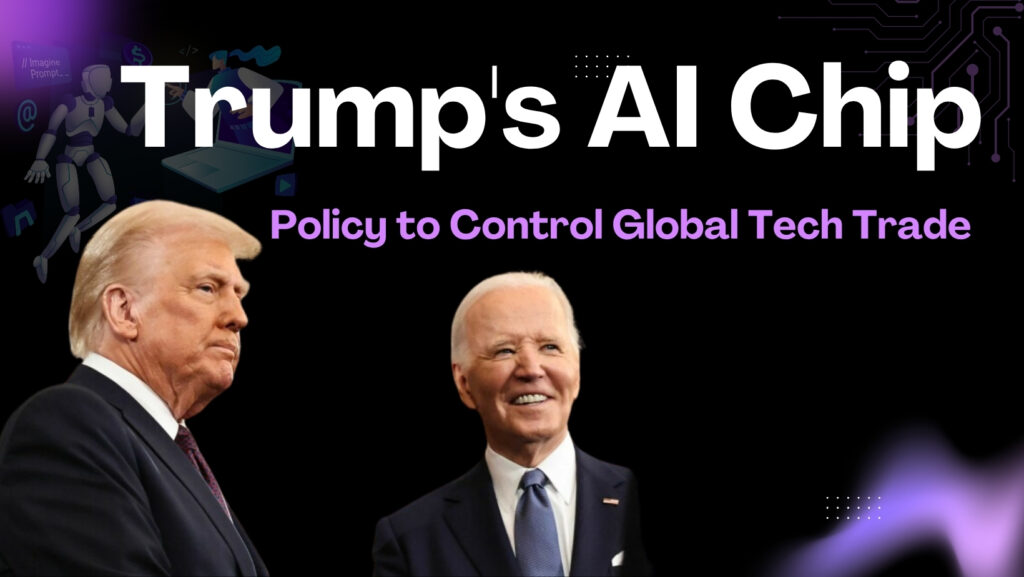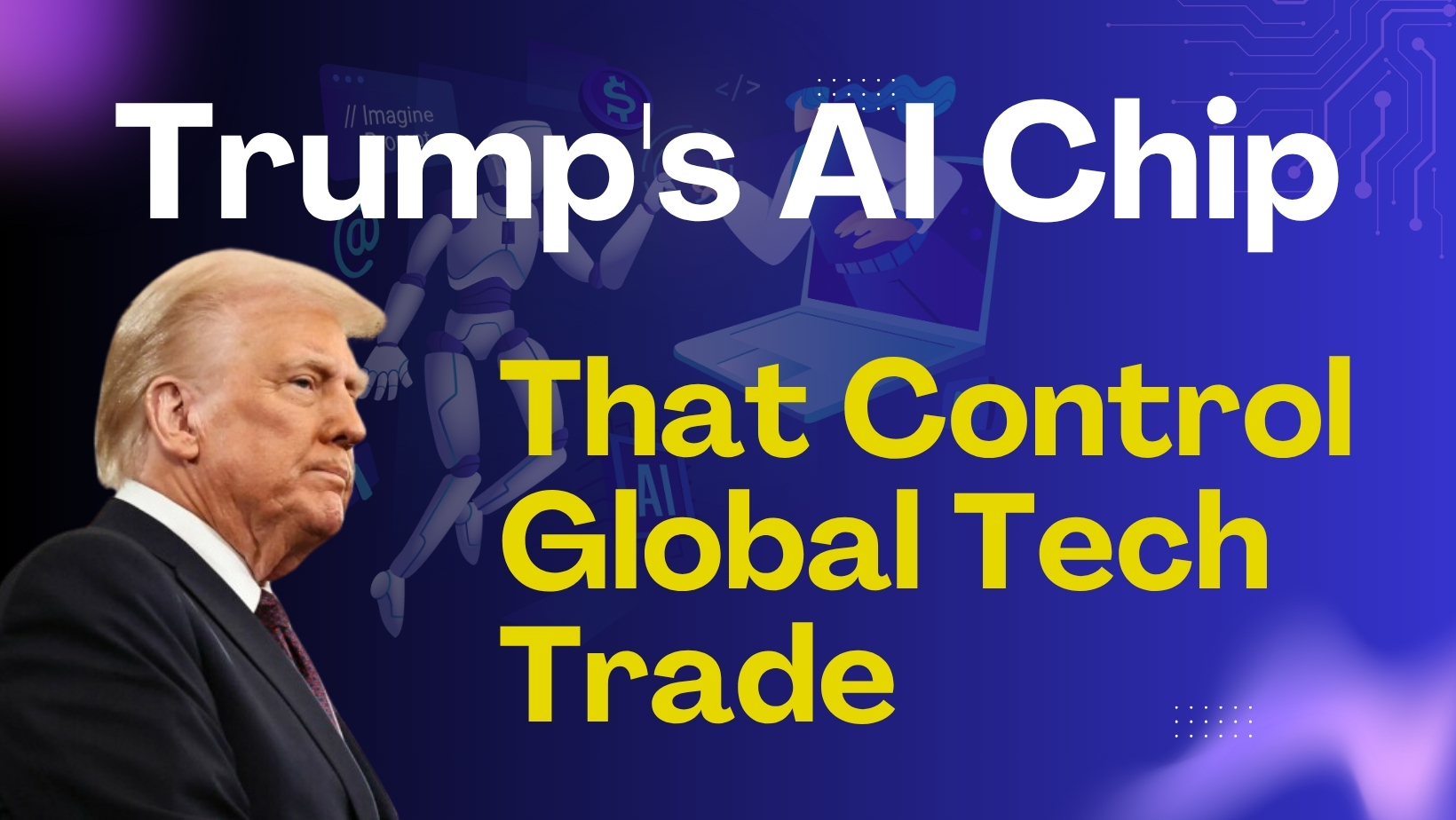The Trump administration’s recent decision to overhaul the Biden-era AI chip export framework, announced this week, marks a pivotal change in the global trade of advanced computing technologies. Effective May 15, 2025, the Biden administration’s intricate three-tier regulatory system will be replaced with a streamlined approach aimed at boosting American innovation while maintaining strategic oversight. This article explores the implications of this policy reversal, its global impact, and the evolving landscape of AI technology trade.
Background on the Biden Framework

The Biden administration’s Framework for Artificial Intelligence Diffusion, finalized in January 2025, established a three-tier system to regulate the export of advanced AI chips:
- Tier 1: 18 regions, including 17 countries and Taiwan, had unrestricted access to cutting-edge AI chips.
- Tier 2: Around 120 countries faced strict import limits based on numerical caps.
- Tier 3: Nations like China, Russia, Iran, and North Korea were entirely barred from accessing these technologies.
This system aimed to balance national security by restricting adversaries’ access to advanced chips while enabling allies and neutral nations to acquire them. However, critics highlighted its bureaucratic complexity, arguing it burdened businesses with compliance costs and risked pushing global partners toward non-U.S. suppliers.
Trump’s Policy Reversal
The Trump administration has criticized the Biden framework as overly restrictive and detrimental to U.S. technological leadership. A Commerce Department spokesperson stated, “The Biden rules stifled innovation and burdened American companies with red tape. Our new approach will unleash U.S. potential while ensuring dominance in AI technology.”
Rather than a tiered system, the administration is exploring a global licensing model supported by bilateral agreements. This approach aims to simplify compliance, offer flexibility, and maintain control over sensitive technologies. The policy shift aligns with President Trump’s upcoming Middle East visit (May 13–16, 2025), where nations like Saudi Arabia and the UAE have voiced concerns over existing chip restrictions.
Global Implications
The policy change reshapes the global AI chip market, creating both opportunities and challenges:
Beneficiaries
- Middle Eastern Nations: Countries like the UAE and Saudi Arabia, restricted since 2023, may secure better access to AI chips. The UAE’s $1.4 trillion investment pledge in U.S. tech underscores its push to become an AI hub, potentially strengthened by a new U.S.-UAE chip agreement.
- Emerging Markets: Nations like India and Malaysia, unaffected by prior restrictions, gain temporary relief. Malaysia’s data center expansion, led by companies like Oracle, stands to benefit significantly.
- U.S. Chipmakers: Companies like Nvidia, a leading AI chip producer, could see expanded market access. Nvidia’s stock rose 3% on May 7, 2025, reflecting market optimism, though it later dipped slightly in after-hours trading.
Challenges
- China and Restricted Nations: The Trump administration remains firm on limiting China’s access, as evidenced by the ban on Nvidia’s H20 chip sales, which led to a $5.5 billion writedown. Controls may tighten on countries like Malaysia and Thailand if they are found diverting chips to China.
- Uncertainty for Businesses: The transition to a new framework creates regulatory ambiguity. Companies face uncertainty until the Commerce Department finalizes its licensing model, potentially via a new rule or executive order.
Industry Perspectives
The policy shift has sparked varied reactions:
- Chip Manufacturers: Nvidia and others have long opposed tight export controls, with CEO Jensen Huang advocating for access to China’s projected $50 billion AI chip market.
- AI Developers: Some firms, like Anthropic, support maintaining safeguards to protect U.S. intellectual property and technological edges.
- Global Partners: Allies and neutral nations seek clarity on how the new licensing regime will affect their access to AI chips.
Strategic and Diplomatic Considerations
Crafting a new framework requires balancing national security with economic interests. The Biden approach focused on preventing indirect technology transfers to adversaries, but its complexity strained international partnerships. Trump’s licensing model aims to foster cooperation through tailored agreements, particularly with strategic partners in the Middle East and Asia. However, negotiating dozens of bilateral deals poses diplomatic and logistical challenges.
The Commerce Department has not specified a timeline for the new rules, indicating ongoing debates about the best path forward. In the interim, existing export controls remain in place, ensuring continuity in restricting sensitive technology flows.
Market Dynamics
The policy shift reverberates across global markets. The easing of restrictions could accelerate AI adoption in regions previously limited by caps, spurring innovation and economic growth. However, it also risks intensifying competition as countries race to develop AI capabilities. For U.S. firms, the streamlined approach may reduce compliance costs and open new markets, but they must navigate evolving regulations and geopolitical tensions.
Conclusion
The Trump administration’s decision to replace the Biden AI chip framework reflects a broader strategy to prioritize American competitiveness while addressing national security. By moving toward a global licensing regime, the U.S. aims to simplify trade, strengthen alliances, and maintain leadership in AI technology. As the new policy takes shape, its success will depend on effective diplomacy, clear regulations, and the ability to adapt to a rapidly evolving global tech landscape. The coming months will be critical for stakeholders navigating this transformative shift. Also reads about AI thinking machines




